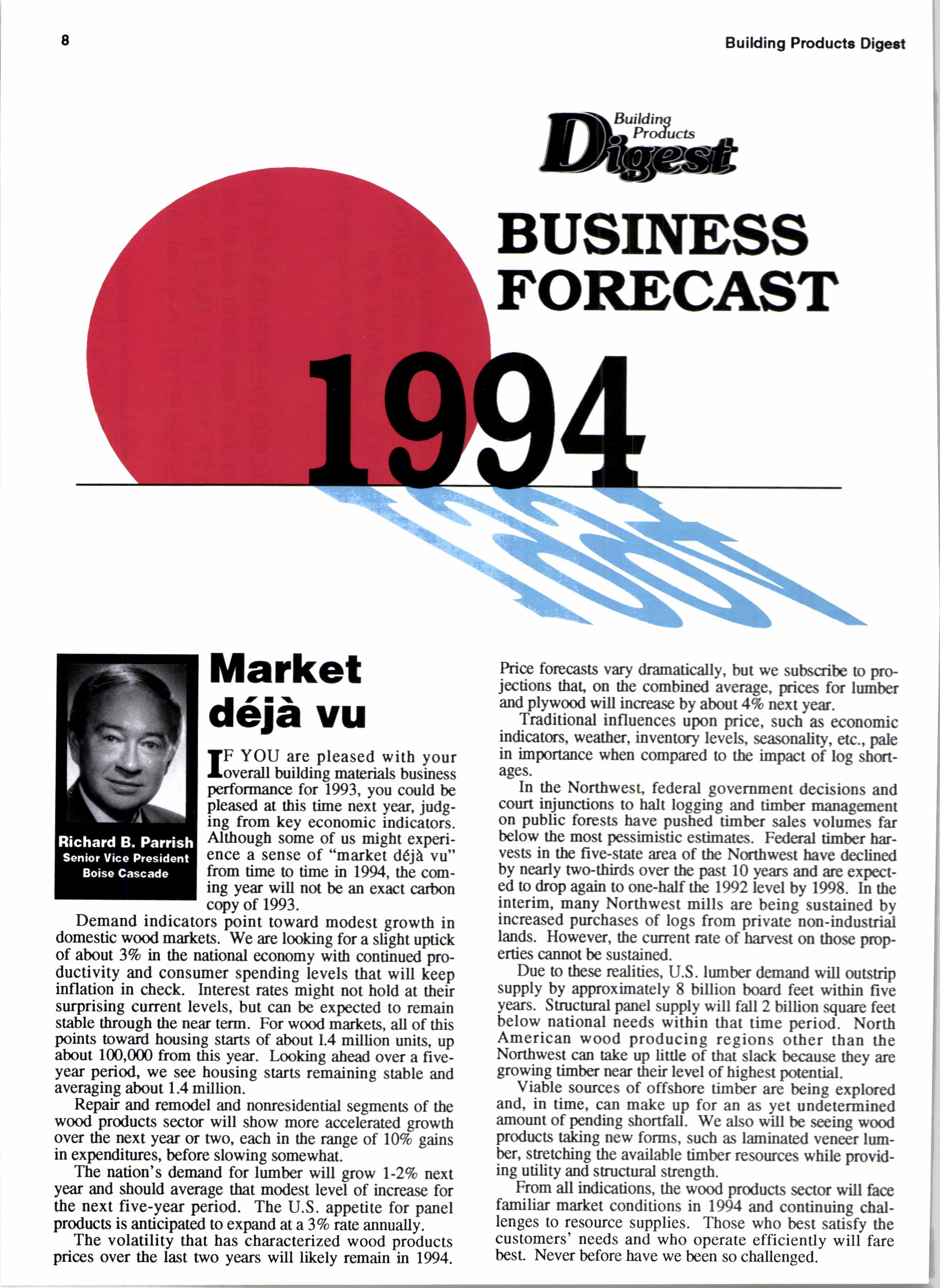
1 minute read
Market deia vu
fF YOU are pleased with your Ioverall building materials business perfomunoe for 1993, you could be pleased at this time next year, judging from key economic indicators. Although some of us might experience a sense of "market d€jtr vu" from time to time in 1994, the cmring year will not be an exact carbon copy of 193.
Demand indicators point toward modest grow0 in domestic wood makets. We are looking for a slight uptick of about 3Vo n Lhe national economy with continued-productivity and consumer spending levels that will keep inflation in check. Interest rates might not hold at their surprising current levels, but can be expected to remain stable through the near tenn. For wood mukets, all of this pgins _q!rqq_ hor.rsing sttrts of about 1.4 million unirs, up about lfi),000 from this year. Inoking ahead over a fiveyear period, we see housing starts remaining stable and averaging about 1.4 million.
Repair and renodel and nonresidenrinl ssgmsnts 9f the wood products secttr will show more accelerated growth over the next year or two, each in the range of 10% gains in expendi0res, before slowing somewhat.
The nation's demand for lumber will grow l-2% next year and should average that modest level of increase for the next five-year period. The U.S. appetite for panel products is anticipated to expand ata37o rate annually.
The volatility that has characterized wood pr<iducts prices over the last two years will likely remain in 1994.










